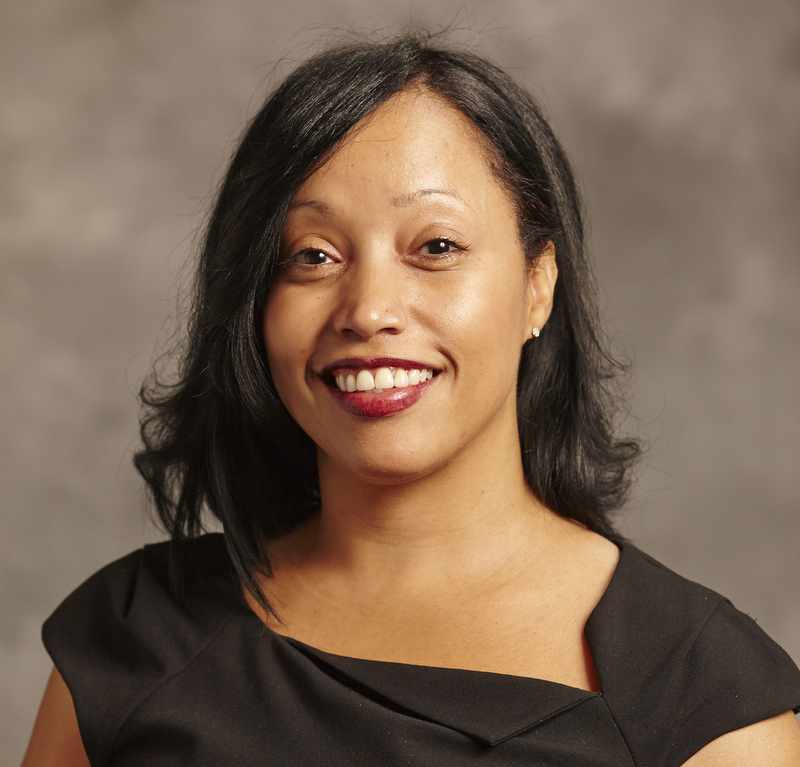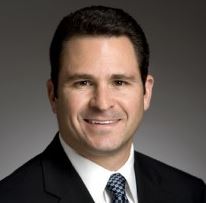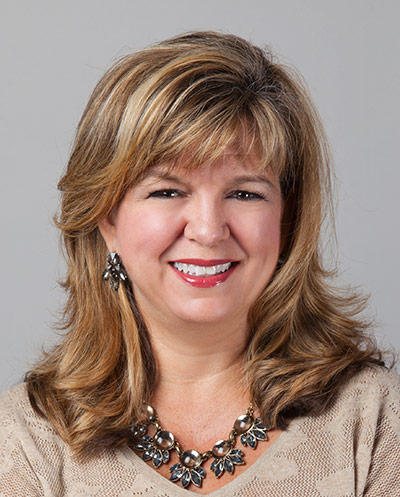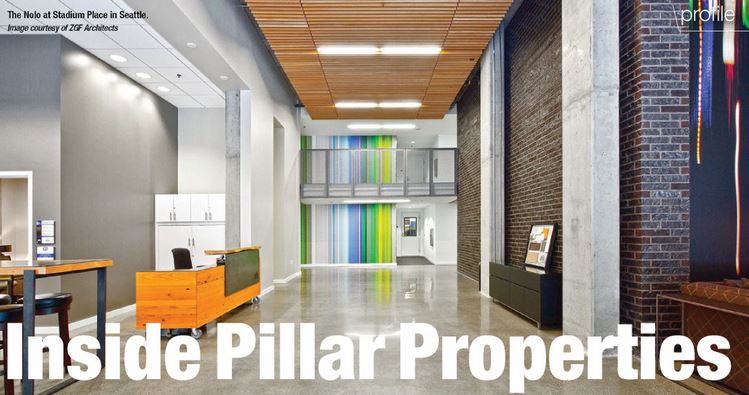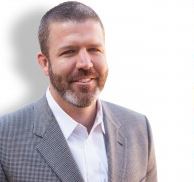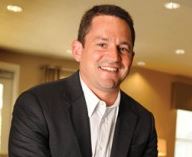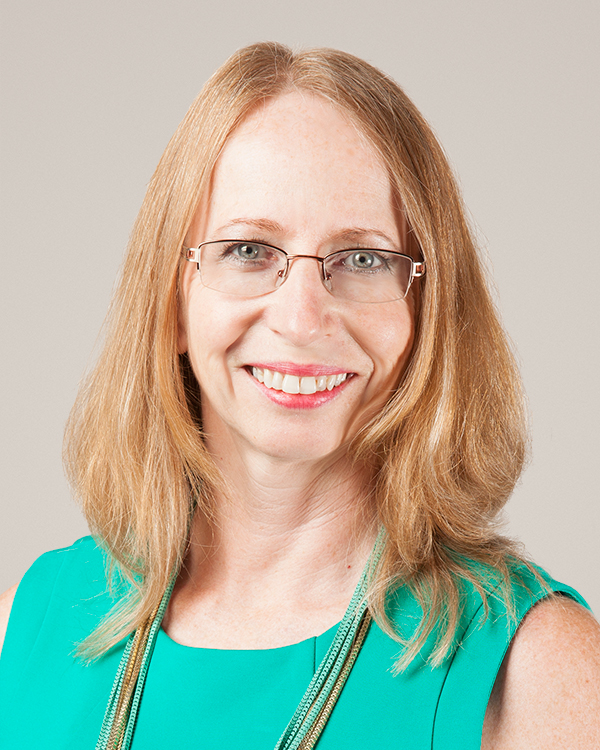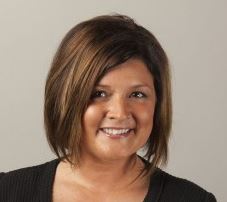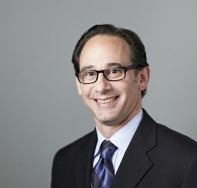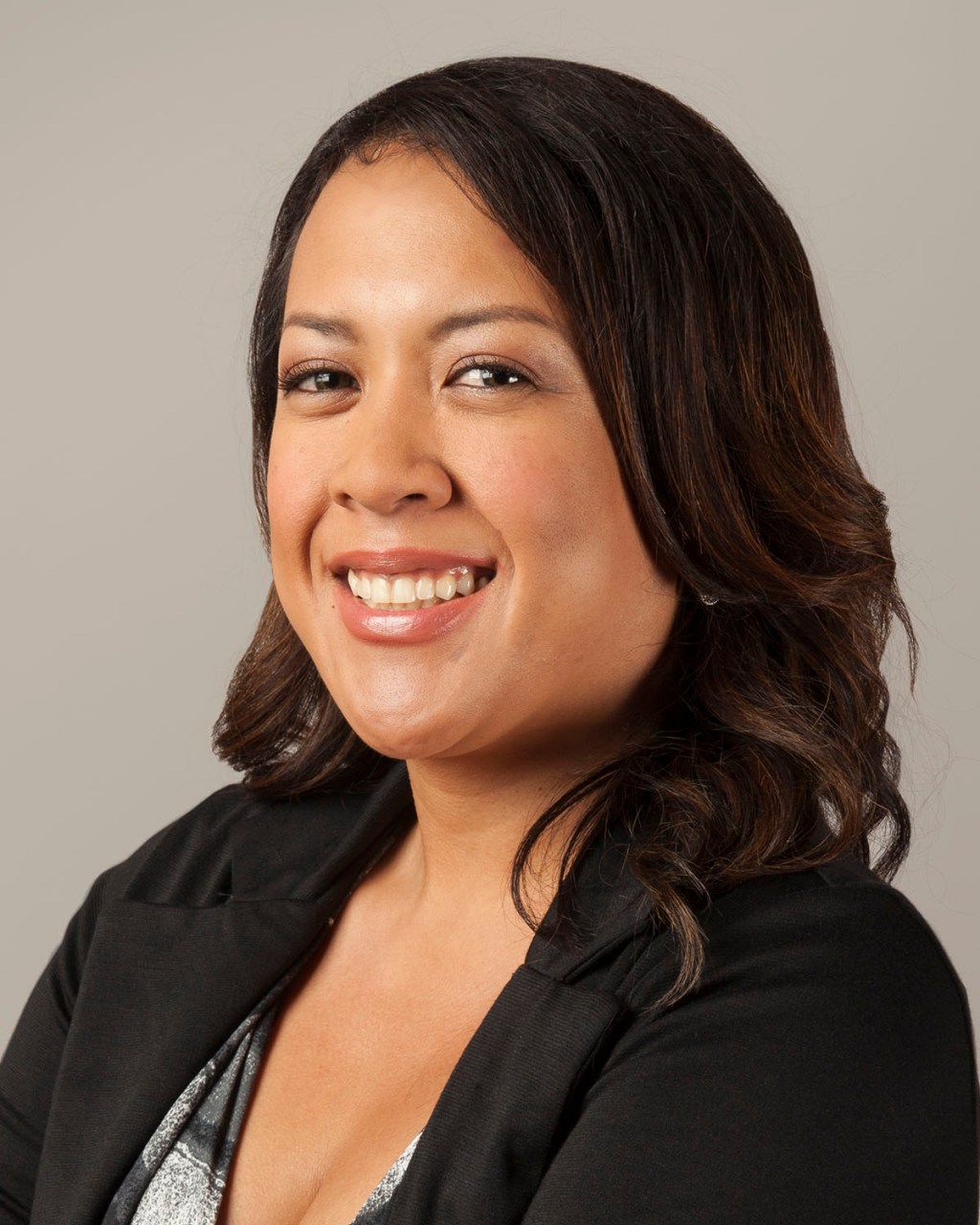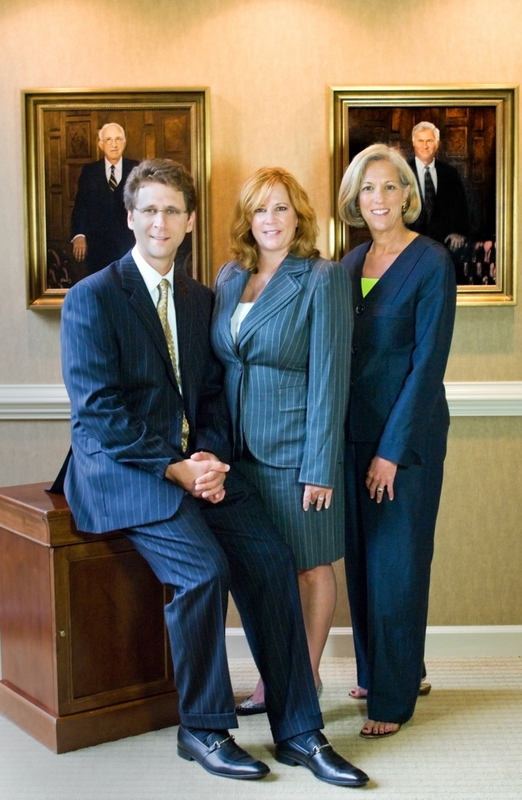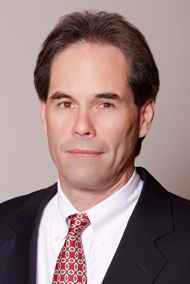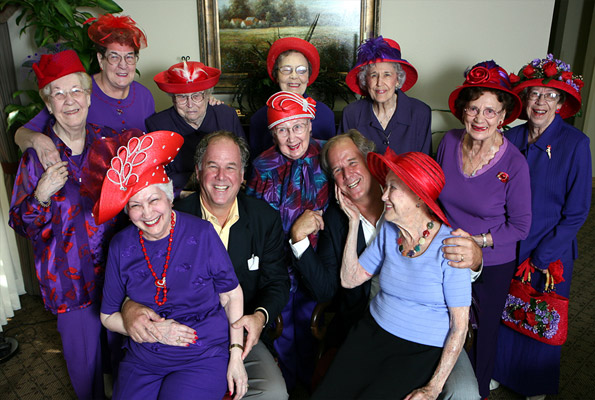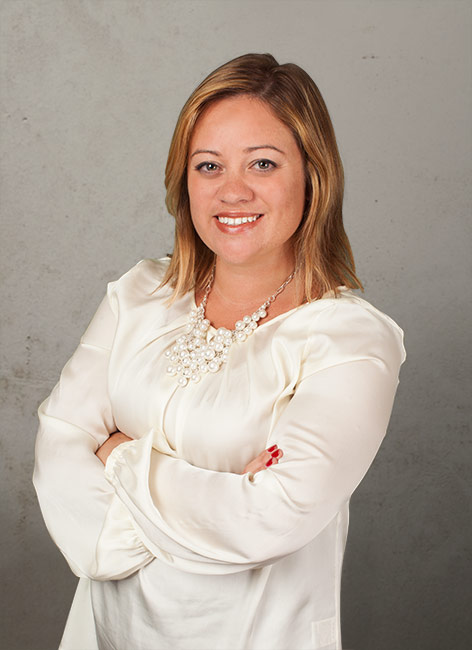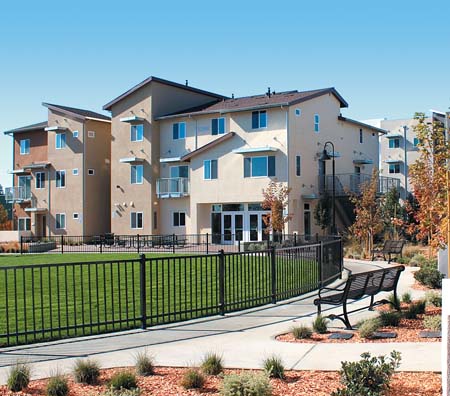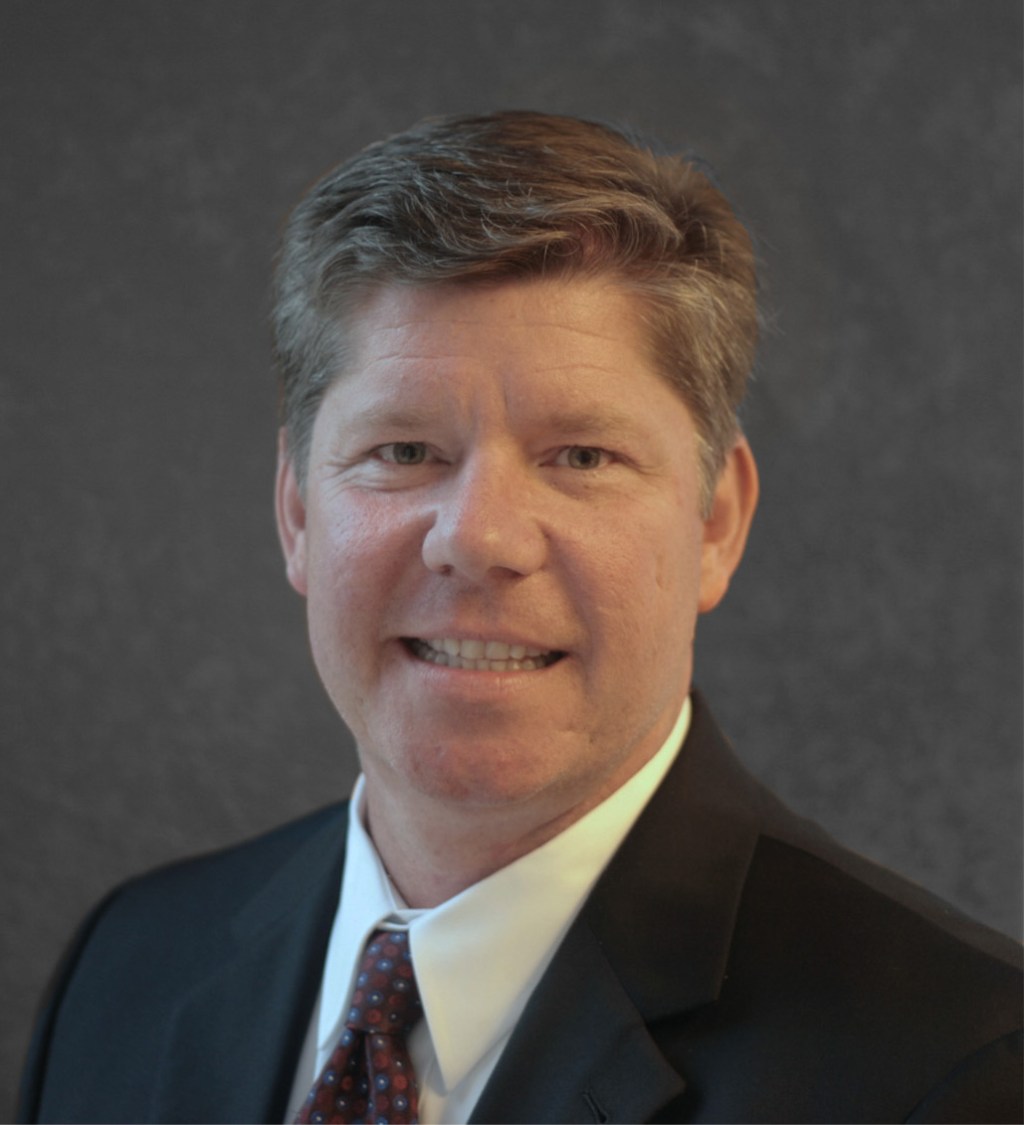At Atlanta-based Post Properties, standing still is simply not an option – for executives and site level employees alike. In the last year, the company has taken on a major technology overhaul, converting from a disparate, multi-system approach to a single stack solution. The transition involved significant investment in change – not just from the perspective of making a major technology purchase, implementing a new system and conducting portfolio-wide employee training – but outside of the company as well. As the first user of Yardi’s VendorCafé, Post introduced more than 1,000 vendors who do business with the company to a dynamic new system for compliance, bids and invoicing. “You want to streamline your processes and you want to reduce risk. We’re a public company. We found that with Yardi we reduced our number of integrated platforms drastically – from 40-plus applications down to about 8,” said Janet Ham, Vice President of Information Technology. Post Properties has interests in 22,650 apartment units in 58 communities, spread over 9 markets. Moving to a single stack allowed Post to achieve myriad efficiencies, from enhanced leasing and resident services, to better mobile maintenance processes, to a potential industry-changer with the use of VendorCafé. Read on to learn about what they achieved. Maintenance goes mobile Equipping apartment maintenance engineers with smartphones and mobile apps that deliver work orders and reporting capability is the clear trajectory for the apartment industry, and Post had immediate buy-in from their maintenance teams. “We’ve been wanting to implement a mobility product for our engineers for years. But there just wasn’t a fully-integrated product until now,” Ham said. Yardi Maintenance Mobile keeps maintenance specialists in the field and helps them keep closer track of scheduling, supplies, project completions and resident satisfaction. Work orders are synced with Yardi Voyager 7S, so that any staff member needing information on a project has easy access. Residents can submit work orders and receive progress updates through their RentCafe resident portal or mobile app. They can also review the service and completion promptness after the work is complete. “I’ve seen my time management get so much better with Yardi because of how I’m able to access the work orders on my smartphone. Maintenance Mobile has helped me save time in that I don’t have to print the work orders. I can map out my whole day and give certain spaces for emergencies and such. I have the ability to add and drop work orders, and sign them off in the field,” said Wesley Fonseca, a Post Properties maintenance technician in Atlanta. Centralized leasing With 11 properties in Uptown Dallas, Post Properties has enhanced efficiency by leasing all 2,300 units in those buildings from a centralized leasing office. Prospects are introduced to the available units and floor plans that might meet their needs with the help of RentCafe CRM, a mobile application that makes it easy for leasing consultants to display photos and features of multiple apartments at different communities. “Their goal, when they walk out of that office with a prospect, is to pare it down to 2, not more than 3 communities that they want to see. They’ll fine-tune what that prospect is really looking for before they leave for the tour,” said Laura VanLoh, Senior Vice President, Post Apartment Management. Then it’s time to hop into a Post-branded Toyota RAV-4 for a site visit, which hopefully culminates in a completed application and approved lease. But if the first community isn’t right, a tablet on hand is another way to keep the prospect interested. “It’s great for when they are on site, and if the prospect feels the apartment home they are standing in does not fit their needs, they can take a look at other options,” VanLoh said. Resident services After move in, Post Properties aims to supply residents with superior quality of life, both through excellent properties and positive consumer experience. The...
Alfrieda Green
Urban Innovations
Beginning this June, the city of Chicago has mandated utility benchmarking for all commercial buildings larger than 50,000 square feet. Urban Innovations, which manages 11 properties totaling 750,000 square feet in the Windy City, is one of a handful of property managers that already has nearly 8 years of such data already in hand. Yardi client Urban Innovations started benchmarking utility use at all its properties back in 2008. Alfrieda Green, Vice President of Property Management for the firm, recently shared why the company came early to the sustainability challenge and how its owners and tenants have benefited. When did Urban Innovations start benchmarking utility performance and why? Green: Around 2006-2007, sustainability suddenly became a hot topic. We had some of our tenants come to us and require-LEED certified space. At that point, once there is market demand, you have to educate yourself. I earned by LEED AP designation with an operations and maintenance specialization. The more I learned, it became clear that this was about operational best practices and sound asset management as well as meeting our tenant needs. It was clearly something that could have financial benefits and operational benefits, as well as customer service benefits. So you started tracking utility performance, and what did you learn? Green: Our first initiative was to benchmark every building in our portfolio, and give ourselves a baseline on how are we performing. It gave us some really interesting information on how our buildings were performing from an energy efficiency standpoint. It really directly correlated with where that particular property was in its life cycle. If the building had older equipment, it made sense for it not to be quite as efficient. But we also found that some buildings that had older equipment had had strategic...
Tricon American Home
Selects Yardi platform
As part of a plan to scale its operations, Tricon American Homes wanted to replace several business systems with a single, integrated source of data whose automation and efficiency would let it grow its portfolio without adding overhead costs. The single-family rental home owner and management company executed this plan by implementing a single solution stack anchored by the Yardi Voyager® Residential property management and accounting platform and supplemented by the Yardi Marketing Suite™ and the Yardi Multifamily Suite™. Tricon’s competitive strategy takes hold the moment a prospective resident discovers a Tricon property through RentCafe™, Yardi’s full online leasing and resident services solution. He or she can see the property’s marketing website, view floor plans and complete the application online, including screening. RentCafe and the Yardi Marketing Suite reduce the application process to mere minutes, rather than the hours or days it takes when disconnected systems are involved, and prospect information is automatically entered into Yardi Voyager. Tricon also improved resident service by allowing online activities such as maintenance requests and payments through RentCafe’s resident portal. Additional Yardi Multifamily Suite products streamline other key business operations for Tricon. For example, Yardi Fixed Assets™ enables physical and financial monitoring of the company’s major property assets through their complete lifecycle, from purchase order to final disposition. Yardi Inspection™ lets the company schedule and perform unit and property inspections. Implementing Yardi Voyager and the full business suite of products has allowed Tricon to keep its business “clean,” meaning there’s a clear audit trail and the marketing and application process is user-friendly. Inefficient interfaces among systems have also been eliminated, electronic payments have been enabled, the procurement process has been centralized and maintenance schedules across the company have been streamlined. “We are pleased that Tricon has selected Yardi...
Holistic Senior Care
From Senior Star
Seniors are the fastest growing segment of the population, with more than 16 million seniors in need of housing by 2050. This previously underserved population has taken center stage as a national housing priority. Yet before the construction and investment boom began, Yardi client Senior Star was providing superior care for seniors and their families. The tradition holds strong as the company continues to receive accolades and recognition for its services. For Letitia Jackson, Vice President of Corporate Engagement, reverence for seniors sparked her interest in senior housing. Senior Star’s stellar track record encouraged her to forge a career with the company that has endured nearly 20 years. “Just as many of us in this industry do, I have a true appreciation for the people who paved the way for us,” begins Jackson. “I entered senior housing through my employment with Senior Star and have remained dedicated to the industry for over 18 years. We can honor residents in the waning years of their lives, filling their lives with joyful, purposeful moments while reducing the time adult children spend in caregiving – increasing the meaningful moments spent with their parents.” Those meaningful moments become increasingly precious as seniors reach the later stages of life. The American Health Care Association reports that the average age of assisted living residents is 85 years with 42 percent having Alzheimer’s disease or other dementias. One in three American seniors over the age of 85, and one in nine who are 65 and older, has Alzheimer’s disease. Dementia can significantly reduce the quality of life that seniors experience. While there is no cure for dementia, Jackson wants to help families cope with the illness and find a way to move forward. She selected Senior Star because it committed to providing...
John Hammill
Capview Partners
When Jones Lange LaSalle acquired The Staubach Company from football hero-turned-real estate leader Roger Staubach in 2008, the firm’s two experts on single tenant, net-lease retail real estate decided to strike out on their own. John Hammill, a Managing Director at Staubach focusing on net lease and capital markets, and Ken Shulman, a longtime commercial executive with extensive retail real estate experience, set their sights on becoming the leading investment and consulting firm focused strictly on single-tenant, net lease properties – a niche with potential for investment growth. The result was Capview Partners. “We’ve tracked $24.8 billion worth of merger and acquisition activity in the last 18 months, and we estimate the net lease space is still only about 10 percent consolidated. We think it’s going to take about 10 to 15 years for it to get anywhere near the consolidation level of shopping centers and multifamily,” Hammill said in a recent interview. Capview Partners’ goal is not to have the biggest portfolio of such properties. Instead, they’re trying to provide dependable returns for investors, who include clients like USAA Real Estate Company, a division of San Antonio-based insurance giant, USAA. Read on for more of our interview with John Hammill of Capview Partners: Can you describe what the single-tenant, net lease retail landscape looks like today? Hammill: In our estimate, malls are 95 consolidated by REITs, pension funds, and insurance companies. We estimate that shopping centers and multifamily are 50-65 percent consolidated, whereas net lease retail is about 10 percent consolidated. We’re starting to see the space consolidating due to technological and communication advances. The process of aggregating net lease properties-is a cleaner and more simple proposition than it was 30 years ago, simply because of computing technology and internet communications. The average...
PMB Real Estate Services...
Going Paperless with Yardi
Real estate companies involved in medical office buildings are thriving with Yardi® commercial property management solutions that help them carry out multiple business operations. For one of them, PMB Real Estate Services (PMB RES), a Yardi Voyager® client since 2006, the platform stands in dramatic contrast to the property management and leasing company’s previous DOS-based system. “We’re thrilled that Voyager was such a great product right out the box. We use it to manage our general ledger, subledgers and leasing database, plus carry out 30-plus accounting closes per month. It’s the heart of our department and, some would say, our company,” said Kristin San Martin, chief financial officer for PMB RES. PMB RES subsequently added Yardi Procure to Pay™, which scans invoices into electronic transactions and automates the approval workflow through vendor payment, to Yardi Voyager. This step cut overhead and storage costs for PMB RES. “Procure to Pay has saved us costs equivalent to at least one full-time position. As one of the early adopters, we have been happy see Procure to Pay grow, and it helped us handle payables in a new way,” San Martin said. “Now I can’t imagine doing them any other way.” “Instead of having one person continuously scanning invoice at a photocopier, Procure to Pay allowed us to redirect responsibility for the initial review away from the corporate office, which added overhead expense, to the field, where people know more about the charges,” she said. “With Procure to Pay, you know that the right approver is approving throughout the process,” added Joanne Russell, controller for PMB RES. “We got rid of a bunch of file cabinets. It’s been great going paperless.” About PMB Real Estate Services San Diego-based PMB Real Estate Services, a wholly owned subsidiary of Pacific...
Pillar Properties
Pride and Passion
When you’re talking multifamily development in the Puget Sound region, the conversation ultimately begins and ends with Pillar Properties, which has approximately 1,200 multifamily units currently operating, plus another 250 that are actively under construction and another 375 scheduled to break ground in 2015. Under the leadership of its president Bill Pettit, Pillar Properties has established itself as a leader in the Pacific Northwest for developing, owning and managing apartment buildings that define the region. By its company mantra, Pillar Properties only deals with residences that express the unique personality and vitality of Seattle’s signature neighborhoods. “We have a saying around here called ‘quietly awesome’ that we use at all levels across all aspects of our business,” says Bill Pettit’s son, Billy Pettit, senior vice president of the company, who was interviewed for this profile. “The concept of ‘quietly awesome’ emerged out of our branding initiative and was initially focused on the experience we wanted to provide for our residential tenants or our residents who are choosing to live in one of our communities. Ultimately that evolved and it now defines our culture and, in general, our approach to multifamily operations within our portfolio.” Another word the younger Pettit likes to throw around is “localicious,” an admittedly made-up term that expresses Pillar’s desire to being a good neighbor and its approach to creating a sense of community. “It’s the backbone for all our content marketing initiatives delivered via various social channels, our ratings and reviews,” he says. “It also helps define Pillar Passions, which is our new charitable initiative where we run quarterly campaigns supporting four different nonprofit organizations or charitable organizations that we support each year.” A 125-year history Pillar Properties is a privately owned company capitalized by the Merrill Family; therefore, it can trace its roots all the way back to 1890, when timber pioneer R.D. Merrill began his first timber operation. “R.D. Merrill Company still exists and is a holding company with two real estate portfolios: Pillar Properties, a developer, owner and operator of premier multifamily assets in the Puget Sound Region as well as a few other strategic real estate investments,” Pettit says. “And our sister company Merrill Gardens, which has been around for almost 22 year and at one point was the sixth largest private owner/operator of independent and assisted living in the industry with roughly 71 properties operating in as many as 16 states.” However, Pillar Properties as known today, has only been around since 2011. “That said, we started launching the strategy in 2007 and started acquiring or assembling a few sites for planned multifamily development in some of the unique neighborhoods surrounding the downtown core here in Seattle,” Pettit says. “We launched a branding initiative in 2011 that resulted in the naming of the company—Pillar Properties—and really defined who we are today from both a strategic standpoint as well as culture-based initiatives and ultimately an operating strategy.” Read the rest of the story on Multi-Housing News...
Commercial Content
Colliers' Blog
Content marketing in the commercial real estate realm makes sense, from a PR perspective. Why not showcase the expertise of investment, development or brokerage leadership with smart writing about trends and business practices? For many companies, it’s a nice idea that might encounter many logistical hurdles a long the way. So a relatively new blog from Colliers International, Colliers Insights, pulls off a rather impressive feat – providing insightful, visual and shareable content relevant to commercial real estate. With a soft launch in October 2014, Colliers Insights is a relatively new project for the company’s marketing team, and one that made intuitive sense. Christine Schultz, global vice president of marketing and research, shared the scoop. CPE: Can you tell me why Colliers sees content marketing as important to its real estate goals? Schultz: The blog has really been a natural extension of how our Colliers advisors want to share insights and moving that into the digital realm. Websites can be very formal, with hard to find information in a quick, easy fashion. The blog provides a casual entry point for digital users to engage with our thought-leading content. CPE: How would you describe the overall experience you are trying to provide for readers? Schultz: We want it to be fun for the audience and share content in an engaging way. It’s really important for us to offer the blog as an authentic experience and to give users a sense of what it’s like to work with Colliers and to feel the magic of our culture for those interested in joining Colliers. CPE: One thing the blog does especially well is its presentation of thought leadership by Colliers executives around the nation and even globally. How do you compel their participation? Schultz: I have been...
Improving Efficiencies...
Arcadia Management Group
Gary Shaw is the kind of real estate executive you want to go to a backyard BBQ with. He’s a self-deprecating family guy, who jokes that he was “suckered” into buying the Arizona-based commercial management company, Arcadia Management Group, that his mother, Peggy Burgess, founded when Gary and his brother were just kids. But he’s only kidding, because underneath Shaw’s friendly, frequently laughing demeanor is an executive who is passionate about improving his business – and determined to find smart, efficient ways to do daily work. Arcadia Management Group’s business model is unique in that the company doesn’t handle property marketing and leasing for their owners/clients. Rather, they take care of everything else: paying mortgages and taxes, collecting rents, property maintenance and cleaning, and a host of other tasks that come along with owning a shopping center, office building, or other commercial property. We recently spoke with Shaw about his business and how he has achieved business efficiencies by adopting new technology solutions. How did you get into property management? Shaw: I literally grew up in property management. My mother was a single parent, and she started Arcadia Management Group. She was in commercial lending and worked for a developer as a controller, and she saw a need in the Phoenix market for a third party management company. What were some of your first jobs? Shaw: I remember coding bills for her at the age of 12. Later on I progressed to working in maintenance with my friends while I was in high school, cleaning shops, doing all kinds of stuff. In college, I did a stint in the accounting department – we used a DOS based system then. What was the best workplace advice your mother ever gave you? Shaw: A thousand different...
Creating Community
NOLA Part II
Nowadays it seems like everybody wants a piece of prime bayou real estate. Some have just landed in the Crescent City. Others have yet to arrive, but are sure to come on down. And there are those who have been here since the early days of rebuilding after The Storm. One is The Domain Cos., a ten-year-old real estate company active in both the established New York real estate market, as well as in up-and-coming New Orleans. Today we continue our two-part story about a company committed to creating sustainable communities that connect to the fabric of their city. One great example is The South Market District, a $250 million, five-phase, mixed-use, green, luxury project and the city’s first transit-oriented development. Encompassing almost four city blocks, it would be easy to assume that The South Market District is another homogenous monolith development. This couldn’t be further from the truth. As Matt Schwartz told The Balance Sheet, South Market was designed by a variety of architects to look like it came together organically. “In an effort to promote the sense of place throughout the district, we added unique features to each building to encourage activity and socialization. For example, The Park will feature downtown’s first new public plaza in decades (Ed. occupying 2,200 square feet). The Paramount is set back from the street at the center to allow for more sidewalk dining, and The Beacon features a wide staircase off the sidewalk that’s accessible to the public, reminiscent of historic European buildings. Furthermore, as a unique example of newly constructed multifamily in downtown, our product offers design, finishes and layouts superior to anything else currently in the market. “ Another element that allowed for South Market to differentiate itself from other projects was the possibility of reconfiguring...
Managing Growth
Bentall Kennedy, Canada
Many North American property managers have grown their portfolios during the recent period of economic resurgence, but few can compare their experience to that of Bentall Kennedy’s multifamily portfolio. In just over two years, the well-known Canadian company – which has a century of experience in the commercial/industrial sectors – began and then quadrupled the size of its managed multi family residential rental portfolio. We recently sat down with Chrystal Skead, Bentall Kennedy’s Senior Director of Residential Property Management to learn about how Bentall Kennedy’s use of Yardi products helped make such a rapid expansion possible. Skead shared that Bentall Kennedy began its foray into the multifamily market with just three properties, amounting to 700 units, at the beginning of 2012. From inception, the intent was to acquire assets across Canada. The portfolio, now with 3,800 units, includes assets in Toronto, Regina, Calgary, Vancouver and Victoria. If you’re familiar with Canadian geography, that’s far from a centralized group of properties. The acquisition of the additional 2,800 units came in January 2014. But less than one year later, Skead said that use of Yardi Voyager helped the transition from three different management groups to one had been relatively easy. “When we grew by five-fold, it was relatively easy to do from a technology point of view. First, we needed to populate Yardi with the data provided by the previous property management company. Our accounting department dealt with most of that. Then it was only a matter of training the onboarding staff on the new systems and expectations,” Skead said. One of her favorite features of the Yardi multifamily platform is that it enables her to have transparency into a property’s performance and ease of remote management. “We had a situation where our portfolio in Toronto...
NOLA’s New Chapter
Let the Good Times Roll
A little over nine years ago, as Hurricane Katrina slammed into the Gulf Coast and the levees broke, one of the most iconic cities in the U.S. was brought to its knees. With 80 percent of the city under water, many doubted that the city could overcome the devastation. But the resilience of New Orleans, extensive government involvement and the dedication of visionary developers paid off – the Big Easy is now flourishing. Though there is much left to do, The City That Care Forgot is well on its way to becoming one of the top urban centers in the country. First sparks of recovery Among the visionary developers of post-Katrina New Orleans is Yardi client The Domain Cos. Domain’s principals met while studying at Tulane University, one of New Orleans’ top colleges. The Domain Cos. was formed in 2004 and the company landed in New Orleans right after Katrina, jumping into the recovery effort. “We have always had a special connection with New Orleans. Working in the city post-Katrina, overcoming all of the obstacles faced in those difficult times, has strengthened that connection and our passion for our work here,” Matt Schwartz, principal and co-founder of Domain told The Balance Sheet. Today, Domain has offices in both New York and New Orleans. Today, the city’s current development market is vastly different from the first few years after the storm. “The tragedy of Katrina ultimately presented an opportunity to drastically improve nearly every aspect of urban life here, from governance and healthcare to education and housing,” Schwartz detailed. “As those improvements took hold, we began to witness a transformation of the city’s economy unlike any other in its history. Significant job growth in areas such as biosciences, digital media, technology and education are attracting new residents and retaining those that are educated here. These new businesses and residents have created increased demand in nearly every sector of the real estate market, from multifamily to hospitality, and have resulted in a healthier office market than we’ve seen in decades.” To date, Domain has developed sought-after New Orleans locations such as the 183-unit The Preserve, the 78-unit The Meridian and the 31-unit Gold Seal Lofts. The company is also developing a 234-key lifestyle hotel in the city’s central core. Game-changing concept “As New Orleans began [this] dynamic transformation, we saw an opportunity to support that growth by creating a world-class, mixed-use, transit-oriented development in the heart of downtown,” Schwartz says, speaking of the $250 million The South Market District, New Orleans’ first TOD. It’s currently under development at the nexus of some of the most culturally rich neighborhoods in the city, including the popular Warehouse/Arts District. By the time the last phase opens in late 2017, the District will include over 700 luxury apartments, 200,000 square feet of retail, including an upscale grocer, and 1,300 garage parking spaces. What sealed the deal was the city’s decision to extend the streetcar line up Loyola Avenue, connecting the Union Passenger Terminal and Downtown with the burgeoning Medical District. The influx of creative arts professionals, especially film industry-related talent was also a boost. New Orleans “recently surpassed both New York and California in feature film production. This creative workforce tends to want to live in downtown areas, where the entertainment and arts scenes are flourishing. We expect South Market to be a popular destination for the creative workforce, as we sit at the nexus of several of the city’s most culturally rich neighborhoods, including the Warehouse/Arts District,” Schwartz explained. Demand for high-end multifamily housing, especially downtown, is also anticipated. South Market’s first two phases, The Park and The Paramount will be delivered in December 2014. The Paramount will bring 209 luxury apartments and 23,000 square feet of retail and restaurant space to the market. The Park comprises 444 garage parking spaces and 27,000 square feet of retail space. Domain has also broken ground on...
Rachel Garrett
Issaquah Highlands
Exemplifying the concepts of New Urbanism, Issaquah Highlands is a master-planned community near Bellevue, Washington, with a dynamic mix of rental housing and single family homes. With four acres of open space set aside for every one acre of development, the Highlands provides residents with tremendous access to the great outdoors – but also features shopping, entertainment and even a green hospital in its commercial sector. We recently sat down for an interview with Rachel Garrett, the Highlands’ Director of Community Operations for the last 7 years. She shared some of the most popular amenities of this unique development and told us about how technology has positively influenced its management. What is your role at Issaquah Highlands? Garrett: I’m the Director of Community Operations, which means I oversee our community managers. They do our problem solving for homeowners and the work of issuing violations and community covenant enforcement. We have a master Homeowners Association, and 23 sub-associations. I also manage the operations side of our community, which involves day-to-day field oversight. Tell us about the range of housing opportunities provided at Issaquah Highlands? Garrett: We’ll build out at approximately 4,000 units of housing, and that includes roughly 760 rental units. 30% of all units within the Highlands are Affordable Housing Units. We have everything from 400-sqare foot studio condos to 5,000 square foot homes that sell for $5 million. Our total population is about 9,000 residents. What does the commercial portion of the project include? Garrett: The commercial portion of the project really transitioned in progress due to the influence of the recession. It was initially proposed to be this very high end shopping center, more like The Grove in Los Angeles. But after the economic downturn, people weren’t developing retail like that anymore,...
Pennrose Adds Products
From Yardi Multifamily Suite
“Our goal is to let our community managers concentrate on helping our company grow and increase revenue,” said Samuel Lopez, systems and implementation manager for multifamily property development company Pennrose Management. “The single solution stack approach that we adopted with Yardi Voyager® and the Yardi Multifamily Suite™ gives us the tools to do that.” He added, “We don’t want to add work for our managers; we want them following leads and building relationships with current and potential residents, which is what the Yardi products help them do.” With a sizeable affordable housing portfolio, a core property management and accounting system that incorporates strong compliance is crucial to Pennrose. “Before Yardi Voyager® Affordable, we hand-wrote or typed in tenant income certifications (TIC) or HUD compliance forms 50059 and 50058, then figured out the calculations manually. It took 30-45 minutes to type a TIC, whereas Voyager completes it in a couple of seconds,” Lopez said. “The compliance piece has been an awesome addition, not only offering easy access to TICs but also tracking compliance for our Tax Credit and HOME program properties.” Pennrose improved its leasing process with RentCafe™, a full online leasing and resident services solution. “RentCafe introduced our staff to the notion that people can complete the entire leasing process online in the convenience of their homes, instead of coming to the office. The integration of RentCafe and Voyager ensures unit availability listings are current. Letting prospects go online to set up appointments, complete applications and credit checks makes our managers’ lives a lot easier,” Lopez said. Another step toward efficiency came with Yardi CHECKscan™, which scans paper rent checks into electronic transactions. “Before CHECKscan, our managers had to do double work—manually type in payments and do receipting, and then go to the bank and scan the checks there. With CHECKscan, you hit ‘post’ and Voyager does the rest. It goes into a ledger and hits our bank accounts with no problem,” Lopez said. Pennrose is taking steps to add other Yardi Multifamily Suite products to Yardi Voyager, including a resident screening solution and an end-to-end procurement platform. “If Yardi can do all these things from one platform, why should we burden our managers with multiple passwords and user names? With Voyager and the Multifamily Suite it’s one username and password. Our managers are embracing what Yardi has to offer, which makes my job a lot easier as well,” Lopez said. With more than 30 years of experience, Pennrose combines quality development and proven management to deliver exceptional lifestyle-centered communities for its residents. With the superior knowledge and unparalleled dedication to get the job done right, Pennrose develops and operates both conventional and affordable communities throughout the eastern half of the United States. For more information, visit...
David Antonelli
Bentall Kennedy
Early in his career, a well-meaning mentor suggested to David Antonelli that he might consider focusing on finance, rather than real estate, so he could easily transition between asset classes during variable economic times. “In the end, I liked real estate so much that I nodded politely and went on with my career. Twenty-five years later, I’m still in the real estate business,” said Bentall Kennedy’s executive vice president and portfolio manager for its Multi-Employer Property Trust (MEPT), the firm’s open-end commingled private equity real estate fund and one of the largest of its class. Antonelli talked to us about the high-performing MEPT and where it is focusing its investment dollars. Give us a brief synopsis of the background of the MEPT fund and its investment emphasis? Antonelli: MEPT is an open end, core private equity real estate fund that invests in institutional quality commercial real estate throughout the United States. The investment objective of the fund is to provide competitive, risk adjusted total returns throughout all real estate cycles. The fund was founded in 1982 by Bentall Kennedy and it now has over $6.8 billion in gross assets, along with 320 investors, which makes MEPT one of the largest private equity real estate funds in the U.S. What has the fund’s return rate been to date? Antonelli: Since its inception, the fund has produced a 7.85 percent total return, and over 90 percent of that total return has come from fund income. MEPT’s total return, I think it’s important to note, exceeds most pension plans’ actuarial assumptions. The fund’s investment strategy is focused on maintaining strong and stable income, building a diversified modern portfolio, providing superior liquidity, and it’s also executed with strong commitment to the principles of responsible property investing, similarly or...
Capital Ideas
First Potomac Realty Trust
Though 11 Dupont Circle commanded a more-than-respectable $89 million when it traded in September, it was far from the biggest or most expensive property to change hands this year in Washington, D.C. A number of other office properties in the capital have commanded several times as much. Whatever it appeared to lack in size, however, the deal made, up in savvy. Not only is the 155,713-square-foot building fully leased, its submarket, Dupont Circle, ranks among the most vibrant urban neighborhoods in the country. And the deal allowed its new owner, Yardi client First Potomac Realty Trust of Bethesda, Md., to reach a major milestone. The acquisition of 11 Dupont Circle boosted the REIT’s holdings in the District past 1 million square feet. Once principally an owner of flex and industrial properties, the 17-year-old REIT has transformed itself in recent years into one of the rising office investors in the nation’s capital. To this hyper-competitive market Donatelli brings a lifetime of local knowledge, diverse executive experience and a reputation for decisiveness. “He is a very good dealmaker,” said Robert Cohen, CEO Of Washington-based Perseus Realty L.L.C. “He doesn’t lollygag around when he sees something he likes.” First Potomac is teaming with Perseus on its biggest development project to date. The partners are targeting a 2015 start for Storey Park, a planned $280 million mixed-use development in the city’s NoMa (North of Massachusetts) neighborhood. Located two blocks from the Union Station transit hub, Storey Park will consist of 60,000 square feet of ground-floor retail topped by 280 residential units and about 350,000 square feet of office space. That project is a vote of confidence in a market that has endured its share of ups and downs during the past several years. After confirming its stature in...
Clearing Up
EAH Housing and the Cloud
Leslie Dabi, Information Systems Manager at nonprofit developer and manager EAH Housing, had a few reservations when EAH began internal discussions about moving to a SaaS-based model. EAH Housing is the type of hands-on organization who liked being self-hosted – Dabi would handle Yardi server updates herself and enjoyed running custom reports for EAH. Moving to the cloud made EAH Housing wonder. Would giving up control and maintenance of the corporate servers mean problems would take longer to solve? What would happen if something crashed? Would service requests be handled promptly? As it turned out, going to the cloud meant that EAH Housing and Dabi get a better night’s sleep. “I spend less time worrying about server crashes or getting that email at 3 a.m. that we can’t contact the server and everything is down. We’re no longer worrying about blackouts – in the past, if our corporate office went down, all 111 properties in California and Hawaii would go down, just because we were holding our servers in-house. For us to replicate that information to another location wasn’t feasible,” Dabi told us. Since the move, things have been running smoothly. No outages have taken place. Maintenance is planned well in advance, and EAH Housing is notified accordingly. The Yardi affordable and cloud support teams are readily available and happy to help with any issues. “They’re very quick. If we need a restoration of a database, it happens now in maybe 15 minutes. I used to do that on my own and back up my own systems, and it took forever for me to do it. For them to do it is much quicker,” Dabi noted. Maintenance and updates typically take place in the early morning hours, so no work-day access is lost. “It’s...
Drucker & Falk
Continuing the company
One company, two families, three generations. That’s the short story of Drucker & Falk, a noted real estate management and investment firm now in its 76th year. With a 30,000 unit fee managed portfolio spread over seven states, this is no mom-and-pop property management operation – though it is firmly rooted in family and tradition. In addition to multifamily management, Drucker & Falk also offers multifamily and commercial investment brokerage services and commercial property management, with an office/retail portfolio of 4 million square feet. Over the years, the company has turned down buy-out offers from major national players, preferring to continue on the path their grandfathers initiated. “We’ve changed with the times, which I think can be one reason why companies rarely make it to a third generation. But we’ve held on to the core principles of the original founders,” says David Falk, Jr. The three current Managing Directors of the company – David Falk, Jr., Wendy Drucker, and Kellie Falk, are the grandchildren of founding partners A. Louis Drucker and Emanuel Falk. They’re the children of Erwin Drucker and David Falk, Sr., who expanded the company from Virginia to North Carolina 45 years ago. Privately held mid-size companies don’t always last past a second generation, and partnerships bring an extra layer of potential complications. But the managing directors of Drucker & Falk believe they may even make it to a fourth round of descendant ownership, and they point back to their grandfathers as one of the reasons why. Founding Grandfathers Louis Drucker and Emanuel Falk came from very different backgrounds. Drucker was a British immigrant to the U.S., who had served in the Merchant Marine before opening a grocery store in Newport News, Virginia. “Manny” Falk, a Newport News teen, met Drucker when...
WinnResidential
Award-winning Management
Unstable growth and slashed funding in affordable housing would suggest that the sector is no longer a lucrative investment. But demand soars higher and countless companies are showcasing just how rewarding affordable housing can be. Yardi client WinnResidential, the property management arm of WinnCompanies, reigns as the nation’s largest affordable multifamily property management company as ranked by the National Affordable Housing Management Association (NAHMA). WinnResidential is also the nation’s sixth largest residential property management firm overall. In the right hands, affordable housing can be an asset to any growing portfolio. In his 20 years with WinnCompanies, Senior Vice President Brian Kean has witnessed the company’s growth despite major cuts in federal and local funding for affordable housing. With outside resources limited, WinnCompanies has to focus on other factors to ensure continued growth. The company’s large scale success with affordable housing development and management comes in part by responding to what consumers want: affordable rents, sustainability, and stellar customer service. To keep development costs low, WinnCompanies often seeks to renovate existing apartment complexes rather than pursue new construction. This approach reduces the amount of costly building materials needed while increasing the availability of quality affordable housing. WinnCompanies works hard to make operations as efficient as possible given limited resources. From a corporate level to onsite staff, the company operates on Yardi Voyager Affordable Housing in conjunction Yardi Budgeting and Forecasting to promote efficiency and accuracy. The software requires fewer employees to get involved in the paper shuffle. “Budgeting has been helpful because previously we were doing it offline on a large linked spreadsheet, which worked fairly well but we had to take the budgets and manually load them into Yardi. It was quite inefficient,” explains Kean. “In this way, if there are any last minute...
The Graham Companies
Versatility + Growth
The story of Yardi client, The Graham Companies, is a lesson in adaptability. When life handed him lemons, founder Ernest Graham made more than lemonade. He transformed a failed sugar cane plantation into a profitable town with commercial and residential properties as well as farms for dairy, pecans, and beef. Nearly a century later, The Graham Companies continues its success by embracing versatility. Graham arrived in south Florida in the 1920s to manage fields for the Pennsylvania Sugar Company. The Great Depression quickly ended that career. Instead of fixating on his losses, Graham took inventory of what he had: thousands of acres, plenty of dairy cows, and a wife who was a great business partner. The two soon opened Graham Dairy Incorporated, which became one of the largest dairy farms in the state. The family faced another dilemma less than thirty years later. Nearby Miami began to outgrow its original city limits. Developers made enticing offers on the Grahams’ farmland. Rather than bow to the pressure, the family decided to develop their land on their own terms. The concept of Miami Lakes took root, including multi-family, mixed-use, commercial, industrial, and hospitality properties. The town has been growing ever since. Miami Lakes is a predecessor of New Urbanism, providing its 30,000 residents with pedestrian access to more than 1,100 businesses, 99 parks, and numerous amenities. The town has received honors as an All American City Finalist and one of the top 100 Best Communities for Young People. “The reason Miami Lakes is so successful is because the quality of our properties is much higher than all of the surrounding areas,” says Andre Teixeira, Executive Vice President and CFO of The Graham Companies. “Everybody wants to live in Miami Lakes. They want to work in Miami Lakes....
Senior Star
Raising the Bar
Yardi client Senior Star offers independent living, assisted living, memory support, and nursing care for seniors at 13 communities throughout the heartlands of the United States. Senior Star has increased its portfolio by a third and its staff base by 43 percent in just a few years. The growth signals the company’s successful staff training that focuses on distinctive customer care as well as the adept implementation of software to facilitate efficiency. Beyond memorizing the five corporate values and task-specific skills, Senior Star cultivates empathy as part of staff training. Distinct educational programs help trainees learn to walk in the shoes of residents both figuratively and literally. The company’s dementia care training, for example, guides employees through a disorienting sensory wonderland that replicates the challenges that some seniors face. Holly Hoover, Senior Financial Analyst at Senior Star, explains the training experience, “Well, you come in and you are outfitted with various common things like your gloves on backwards and goggles that you can’t see through. You may have really hard spiky things that you’re asked to put on your bare feet. You’re led into a dark room where loud noises and various lights and other stimuli are presented to you with these hindrances so that you can experience the sensations that a dementia care resident might experience.” Trainees are then given basic tasks to perform. The disorientation caused by the stimuli and the physical discomforts help trainees to understand the struggles of residents suffering from dementia. Senior Star also requires onsite personnel to familiarize themselves with residents. Personalized care is a basic key to customer service but the approach also forges bonds that will promote healthy recollection skills for residents with dementia and Alzheimer’s. Hoover explains, “One of the things that begins to fade very quickly with a dementia care person is a memory of basic things: memory of people, memory of objects and events in their life. And the more we can tether them to that memory through our programming—through finding out, you know, as much as we can about that resident and having daily activities to help reinforce those things—the better chance they have of maintaining health. That’s, you know, what we’re about. That’s our culture of customized service to a resident.” Senior Star employees are able to focus on empathy and customized service because they are less burdened by the minutiae of daily operations. Configurable software improves the efficiency of the field staff, allowing members to focus on resident wellbeing. Senior Star currently uses Yardi Voyager, which consolidates data across the company’s portfolio, providing easy access to detailed information on each property without paper trails and time delays. Multiple types of reporting for assisted care living, memory care licensing, census-type reporting, building inspections, rent rolls and more, are all accessible with customizable permissions for those who need it. “We are able to provide that information out of the system. Our users onsite can use that without requesting from the main office and waiting,” says Hoover. “Being able to call it up in Voyager at a moment’s notice is necessary.” The time saved on reporting is then diverted to staff support and resident care. After attending YASC , Hoover is convinced that the company is just beginning to tap into all that Yardi has to offer. “We’re going to examine the electronic health records (EHR) and we are certainly looking forward to Senior CRM that we saw here at YASC today,” she says. “This is kind of where EHR comes in: you know, if you have a new employee that maybe hasn’t known the resident, we can get something in our systems that enables us to bring a new staff person up to speed very quickly on this resident, what affects her, what she dislikes, what she needs, what her daily routines are, what programming she responds to–anything that we can implement to that effect that makes that...
Buckingham Companies
Marketing in motion
Buckingham Companies may have forged its identity as a leader in commercial real estate but its multifamily properties have established their own reputation. In 2013 alone, the company received 19 awards for its singular properties. Spreading the word about Buckingham Companies’ award winning properties is an equally distinguished marketing department. The staff was honored with a Prodigy Award for Best Overall Marketing Program, another for Best Color Advertisement, and the Bronze Adrian Award for Complete Campaign and Posting. Nicole Crosby, Marketing Manager, believes that the trick to modern marketing is for the department staff to quiet its own assumptions. “It’s less about what we have to say and more about what customers have to say. We’re just trying to do a better job of monitoring what our customers are saying and leveraging that feedback to use in our marketing campaigns,” says Crosby, pictured at right. “We can’t rely on what we think is great about our communities. We have to listen to what our customers have to say and use that as our marketing message.” Buckingham Companies’ approach appeals directly to Millennials, whose social media usage serves as a direct line of communication to the marketing team. The team’s attentiveness has paid off. From feedback and observation, Buckingham Companies decided to capitalize on the popularity of Buffalo Wild Wings restaurants and a common housing woe: roommate dysfunction. “We did a marketing piece where we gave the students one of the BW3 wet naps attached to a little card that went out with the to-go orders that said, ‘Things are about to get messy. We’re here to help.’ Then on the other side of the card, we mentioned, ‘Now let’s talk about your living situation,’” laughs Crosby. The card gave students details about local properties....
Against the Wall
Limited Affordable Options
Michael J. Novogradac, a managing partner at Novogradac & Co., estimates that available affordable housing lags behind demand by as many as 20 million units. The funding simply isn’t there. Without it, low-income families and affordable housing providers are running low on options. Aubrey Fakalata, Resident Manager of Yardi client Burbank Housing has experienced the dire need for new construction firsthand, “That was one of the reasons why [Burbank Housing] built Logan Place (pictured, right), was for the homeless. When the company advertised that they were opening a brand new affordable housing property, they went straight to the homeless shelters. A majority of our applicants were from the shelters throughout Sonoma County,” she says. Without adequate housing availability, low-income families are relegated to shelters or the streets. Competition for one of the few affordable housing units becomes desperate. There are several factors contributing to the decline in available housing. Primarily, the building costs have increased while equity has remained the same for decades. There are also fewer gap financing offers and tax credits, with less money flowing from HUD in programs such as the HOME Investment Partnerships and The Community Development Block Grant. Lastly, equity investors aren’t seeing the returns that they would prefer, making affordable housing an unappealing option. “There is always a shortage of federal and state tax credits to go around,” begins Jeanne Taylor, CFO of Preservation of Affordable Housing, a Yardi client. “After the economy hit a few years ago, the tax credit arena wasn’t as plentiful…and the investors became a little stricter in their requirements.” Future tax reform could further tighten investors’ purse strings. Any legislation that includes lower rates and longer depreciation would damage the industry’s bottom line. Novogradac & Co. proposes that the industry would see as...
Jim Postell
Transwestern
Jim Postell brings an unusual background to the commercial real estate industry – with a passion for acting and communications, he thought he might work as a journalist or producer. But when he graduated from Florida State University with a degree in Communications/Directing, no companies in his field were hiring. So, he made a decision that would shape the future of his career. “My dad worked in commercial real estate for a company called Cross & Brown in New Jersey. He was a huge influence and encouraged me to make the shift to the industry, which he saw as a more stable and practical field.” More than 20 years later, Postell has built two regional commercial real estate offices from the ground up in his home state of New Jersey. The first was for Trammel Crow and the second was Transwestern’s New Jersey branch, an operation he grew from “me, on a laptop in my kitchen,” to a thriving office with 30 employees. Throughout his career, Postell has persevered through hardships – both professional and personal, such as raising his two young daughters after losing his wife to cancer. A turning point in his career, one that has stayed with him to this day, was his direct involvement in quickly finding new office space for 2,000 American Express employees in a span of just 10 days, immediately following the 9/11 terrorist attacks. Under Postell’s leadership, Transwestern was recently recognized as New Jersey’s No. 1 “Best Place to Work” by NJBIZ, an honor that Postell considers his greatest career achievement to date. Read on for excerpts from our interview with Jim Postell. After making such a major industry shift, have you found happiness in real estate? Postell: I enjoy it a tremendous amount and think...
Dylan Pichulik
XL Real Property Management
Not all costs are spelled out in a lease agreement, according to Dylan Pichulik, CEO of Yardi client XL Real Property Management. We recently interviewed Pichulik about hidden costs associated with rental units. Tell me about XL Real Property Management. Pichulik: I created XL Real Property Management as a way to better serve offsite owners and their property management needs as more and more NYC property buyers from overseas were scooping up investment properties here in the City. Since many of these foreign investors do not necessarily understand the work and many different intricacies that go into owning property here, my team helps provide a local resource that handles daily operations, like rent collection or property renovations, that many these offsite owners are unable to do from thousands of miles away. We currently have a roster of clients based both across the United States, as well in countries such as China, Australia, Russia, Venezuela and more. What are some hidden costs of rentals? How can these be avoided? Pichulik: There are quite a few additional expenses that come attached to many rental units, both in New York City and elsewhere in the country, that many people are generally not aware of. If an apartment has floor-to-ceiling windows or high ceilings, it is harder to maintain a consistent temperature, especially during the summer and winter months, causing energy bills to increase drastically. Tenants should utilize heavier curtains for the apartments with floor-to-ceiling windows, in order to maintain a consistent temperature, depending on the season. Backyards, especially in cities, are not something that renters typically factor in as an additional cost. However, unless a landlord specifies in the lease that they will maintain the backyard for a tenant, the tenant is responsible for maintaining the space,...


